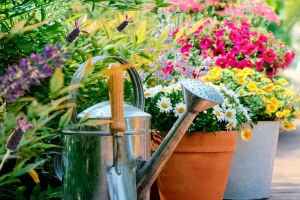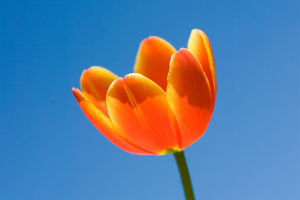You don't need to overhaul your entire backyard to garden sustainably.
Often, it starts with one simple decision: choosing the right plants. Whether you're dealing with dry summers, rising water bills, or just a desire to garden with a lighter environmental footprint, the plants you select can make or break your success.
But what actually makes a plant sustainable? It's not just drought resistance. It's about how a plant interacts with soil, supports pollinators, and requires fewer inputs—like fertilizers and pesticides. The good news? You don't have to sacrifice beauty or variety to build an eco-smart garden. You just have to plant with intention.
Why Sustainable Plants Matter
Before diving into plant names, it helps to understand what makes a plant sustainable in the first place.
1. They conserve water.
Sustainable plants often have deep root systems or thick, waxy leaves that retain moisture. This means you water less, and the soil stays healthier longer.
2. They support pollinators and wildlife.
These plants often bloom with nectar-rich flowers or produce seeds and berries that benefit bees, butterflies, and birds.
3. They protect the soil.
By preventing erosion and improving soil structure, the right plants actually enhance your garden over time.
Top Plant Types for a Sustainable Garden
Now let's get specific. The following plants don't just survive—they improve your space in subtle but powerful ways.
1. Lavender (Lavandula angustifolia)
Lavender is not only beautiful and fragrant—it's also a pollinator magnet and requires almost no extra watering once established. Its thick foliage helps shade the soil, keeping moisture in, while its flowers provide nectar throughout the season.
2. Yarrow (Achillea millefolium)
This hardy perennial thrives in poor soil, tolerates drought, and blooms for weeks. Its fern-like leaves help stabilize soil, and its flat-topped flowers attract bees and beneficial insects like ladybugs.
3. Coneflower (Echinacea purpurea)
Known for its resilience, coneflower tolerates heat, poor soil, and pests. It also reseeds itself, reducing your work year to year. Birds love its seed heads, and its long bloom time makes it a pollinator favorite.
4. Switchgrass (Panicum virgatum)
Native grasses are often overlooked, but switchgrass is a powerhouse. Its roots grow deep—sometimes over 5 feet—making it excellent for erosion control and soil health. It needs almost no water once established and provides year-round texture and cover for wildlife.
5. Creeping Thyme (Thymus serpyllum)
Instead of using water-hungry lawn grasses, many eco-conscious gardeners are turning to creeping thyme as ground cover. It tolerates foot traffic, flowers in summer, and attracts bees without needing mowing or chemical fertilizers.
How to Choose the Right Plants for Your Region
One common trap gardeners fall into is assuming a plant labeled "drought-tolerant" will thrive anywhere. In truth, sustainability is local.
Tip 1: Look up native plant guides for your area through botanical gardens or extension offices. Native species are already adapted to local pests, weather, and soil types.
Tip 2: Observe your yard's microclimates. Is there a shady corner that never dries out? A patch that bakes in afternoon sun? Matching plants to conditions is half the battle.
Tip 3: Avoid invasive species, even if they seem low-maintenance. Some popular garden plants can spread aggressively and outcompete native vegetation.
Build Soil Health Naturally
A sustainable garden doesn't rely on synthetic fertilizers or constant amendments. The plants you choose should contribute to the system.
1. Mulch with purpose: Many sustainable plants, like comfrey and ornamental grasses, drop nutrient-rich leaves that act as self-renewing mulch.
2. Deep-rooted perennials: These plants break up compacted soil and bring nutrients closer to the surface, naturally improving structure.
3. Plant diversity: Including a variety of plant types (grasses, herbs, flowering perennials) builds a more resilient system by discouraging pests and diseases.
The Unexpected Perks of Sustainable Planting
Beyond the environmental benefits, sustainable gardens are often easier to manage. Here's why:
• Less watering = less time and lower bills.
• More pollinators = better fruit and flower production.
• Fewer chemicals = a safer space for pets and kids.
Plus, the joy of watching a native bee land on a plant you chose intentionally is hard to beat.
What's Growing in Your Yard?
Shifting to a more sustainable garden doesn't mean ripping everything out—it starts with just one or two thoughtful additions. Maybe it's swapping that patch of turf for creeping thyme. Maybe it's planting switchgrass near a slope where erosion is a problem. Whatever your space, there's likely a plant that can solve a challenge and support the ecosystem at the same time.
What's one part of your garden that feels like a "problem area"? Let's find a plant that makes it part of the solution. Sustainable gardening is smarter—not harder—and the results often speak for themselves.


